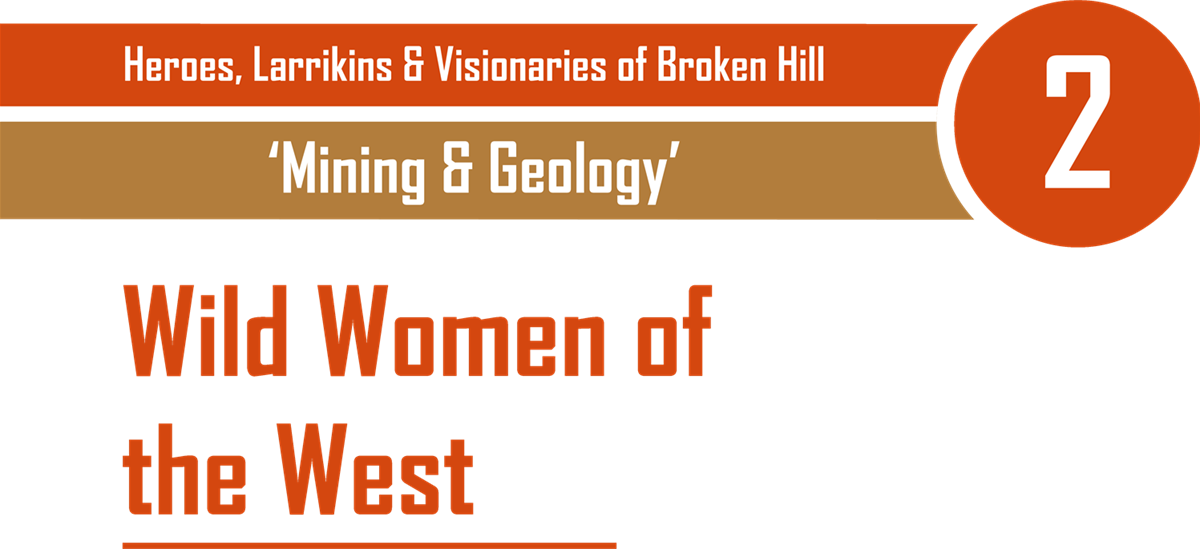Wild Women of the West

‘The women of Broken Hill are the first great body of working women who have raised their voices in united protest against the glaring injustice under which they are compelled to live’, wrote suffrage campaigner Mary Lee in a letter to the Barrier Miner in September 1892.
By 1892 Broken Hill had experienced years of turmoil. Strikes in 1890 and 1886 had failed to improve the conditions of the workers but had seen the formation of the Amalgamated Miners’ Union in 1886 and the rise of support from the women of the town. In 1892 members of the Females United Strike Protest Committee gathered in solidarity in the Central Reserve for protest meetings 5000 people strong. The mining companies’ intent to bring in non-union ‘scab’ labour triggered a strike that was to last almost four months.
Women joined picket lines and armed themselves with mops and broom handles, attacking shift bosses and, popular legend has it, they tarred and feathered scabs. A man who attended a women’s meeting dressed in women’s clothing was told “if the women caught him there again, they would see if they could make a woman of him”.
The anger and passion and the sense of unity driving the Broken Hill women, and their fury with the scabs, was not just born of their solidarity with each other and their men: their children were starving and their families suffering. The strikes came at the price of great hardship: poverty, disease and malnutrition.
By 1898 the Barrier United Female’s Strike Protest Committee Brigade was replaced by the Broken Hill Women’s Brigade. The first meeting was held in 1898 in the Masonic Hotel on the corner of Argent and Oxide Streets. The notice for the meeting read: “All matrons and maids who are in sympathy with the union are requested to attend.’ In the spirit of the times, 400 members of the Women’s Brigade, calling themselves the Daughters of the Union, again supported their men by picketing the mine sites and abusing scab labour entering the mines. During the Big Strike, the eighteen-month lockout between 1919-1920, the women of Broken Hill knew what to do. They held strong through hunger and threats, insisting on better, safer conditions in the mines. More than 140 men had died underground since the 1898 strike, and lead poisoning and ‘dusted lungs’ had incapacitated and injured many more.
The Daughters of the Union captured the imagination of the time and appeared in newspaper illustrations and cartoons, dressed in corsets and long skirts carrying their mops and brooms ‘sweeping the city free of scabs.’
The women of Broken Hill have entered politics and restored ecosystems, run businesses and innovated and excelled in the sciences and the arts – many of them whilst raising families. Broken Hill was the home of the first woman to own a mine, and the first woman to be honoured with a statue at the Australian War Memorial. The wildness of the outback requires a certain kind of spirit, a quality the ‘wild women’ of Broken Hill have forged over 140 years of resilience and courage.
Audio transcript available.